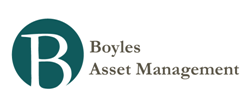Hussman Weekly Market Comment: More Than Meets the Eye
Our overall impression is that the weakness we observed in the markets last week, particularly given the heavy damage to market internals, may convey more information than simply concern about the debt ceiling. There seems little doubt that investors will take a measure of relief from a favorable resolution of that situation. A failure of that advance would suggest that there is more to recent market weakness than meets the eye, and would contribute to more significant concerns about the economy itself.
Clearly, some of the more important indicators to monitor in the next few months will include the S&P 500 (particularly a decline below its level of 6 months prior), the ISM Purchasing Managers Index (anything at or below 54), Consumer Confidence (any significant decline in the Conference Board figure toward 60 or so, or a further contraction in the spread between "future expectations" and "present situation"), non-farm payroll growth (less than 0.5% over a 6-month period), capacity utilization (further weakness of even a point or two), and the aggregate weekly hours index (a decline below its level of 3 months earlier).
For now, our concerns remain focused on significant "core" issues facing the markets and the economy, including overvaluation, compressed risk premiums, over-reliance of investors on the maintenance of record profit margins, unresolved mortgage strains, and sovereign debt problems. Valuations remain rich on the basis of normalized earnings, market internals have deteriorated considerably, and recession risks are increasing. There are certainly various policy developments that are likely to provoke investor enthusiasm from time to time. What is important to us is the weight of the evidence. For stocks, that evidence remains unfavorable, but we've introduced some modest flexibility to our hedge while retaining a strong defense. For the economy, the evidence is of growing concern, but is not decisive enough to support the expectation of an oncoming recession. Still, the developing risks of an economic downturn are greater than investors widely seem to assume.
.....
In case you haven't read the New York Times piece yet, I thought it would be appropriate to end with some comments from outgoing head of the FDIC, Sheila Bair (see Sheila Bair's Exit Interview ):
On Bear Stearns: “Let's face it,” she said. “Bear Stearns was a second-tier investment bank, with — what? — around $400 billion in assets? I'm a traditionalist. Banks and bank-holding companies are in the safety net. That's why they have deposit insurance. Investment banks take higher risks, and they are supposed to be outside the safety net. If they make enough mistakes, they are supposed to fail. So, yes, I was amazed when they saved it. I couldn't believe it. When they told me about it, I said: ‘Guess what: Investment banks fail.' ”
On restructuring: By the spring of 2007, she was holding meetings with industry executives, pushing them to raise their lending standards and to restructure — that is, modify — abusive mortgages so homeowners wouldn't lose their homes when the housing bubble burst and large numbers of loans were bound to default. “There is nothing unusual about this,” she told me. “Restructuring is one of the tools the banking industry has at its disposal.” ... The banks, she says, “fought us tooth and nail.” She lost.
On bailouts: “Why did we do the bailouts?” she went on. “It was all about the bondholders,” she said. “They did not want to impose losses on bondholders, and we did. We kept saying: ‘There is no insurance premium on bondholders,' you know? For the little guy on Main Street who has bank deposits, we charge the banks a premium for that, and it gets passed on to the customer. We don't have the same thing for bondholders. They're supposed to take losses. What was it James Carville used to say?” Bair said. “ ‘When I die I want to come back as the bond market.' ”
....................
Link to: Sheila Bair's Exit Interview
- Hussman Weekly Market Comment: Dancing At The Edge Of A Cliff
Present market risks involve a confluence of factors. First, valuations remain unusually rich. Though prospective returns are better than at the 2000 and 2007 peaks, valuations remain more elevated than at any point prior to the late-1990's bubble,...
- Hussman Weekly Market Comment: Warning: Goat Rodeo
Goat Rodeo - Appalachian slang for a chaotic, high-risk, or unmanageable scenario requiring countless things to go right in order to walk away unharmed. Over the years, of the most frequent phrases in these weekly comments has been "on average." Most...
- Hussman Weekly Market Comment: Dodging A Bullet, From A Machine Gun
Leading economic evidence continues to teeter at levels that have always and only been breached in recessions, but the sharp deterioration we initially observed late last year has been followed by modest stabilization - though still near the area that...
- Hussman Weekly Market Comment: Hard-negative
With the exception of extreme market conditions (see Warning- Examine All Risk Exposures , and Extreme Conditions and Typical Outcomes ), I try not to wave my arms around about near-term market risks, but I think it's important to cut straight to...
- Hussman Weekly Market Comment: Recession Warning
I think this could be one of the most important things I’ve read this year. Based on evidence that has always and only been observed during or immediately prior to U.S. recessions, the U.S. economy appears headed into a second leg of an unusually challenging...

